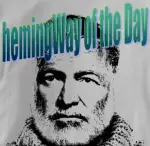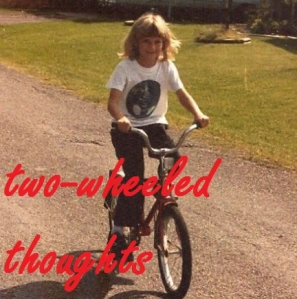 This was a most weird experience. I brought this book home when it was weeded from a library where I used to work, in probably 2010 or 2011. It has therefore made several cross-country moves with me. Why was I so invested in a banged-up copy of a Howard Hughes biography? I guess I was just that interested in learning more about this mysterious figure; but it does feel like an odd choice. Its publication date is now more than 20 years past, and it reads like it could be older still. Hughes is a fairly off-putting guy, to put it very mildly, and our biographer doesn’t benefit from soft-pedaling his criticisms. It frankly gave me the creeps throughout. But Hughes is such a profoundly bizarre man, and this is such a shocking story, that I couldn’t put it down, nor really stop talking or thinking about it. So what does that mean for my review? As a book, it’s got some problems. But I couldn’t walk away. It might earn back some points for that.
This was a most weird experience. I brought this book home when it was weeded from a library where I used to work, in probably 2010 or 2011. It has therefore made several cross-country moves with me. Why was I so invested in a banged-up copy of a Howard Hughes biography? I guess I was just that interested in learning more about this mysterious figure; but it does feel like an odd choice. Its publication date is now more than 20 years past, and it reads like it could be older still. Hughes is a fairly off-putting guy, to put it very mildly, and our biographer doesn’t benefit from soft-pedaling his criticisms. It frankly gave me the creeps throughout. But Hughes is such a profoundly bizarre man, and this is such a shocking story, that I couldn’t put it down, nor really stop talking or thinking about it. So what does that mean for my review? As a book, it’s got some problems. But I couldn’t walk away. It might earn back some points for that.
Richard Hack is noted in his bio to be an investigative writer largely covering Hollywood and the media. I found his telling to be salacious, sensational, decidedly creepy in its interest in Hughes’s relationships with women and (in particular) teenaged girls. The subject of this biography had deeply problematic relationships with women. That doesn’t mean the author had to join him there. Hack consistently characterizes young women as bimbos or manipulators, uses their first names (in contrast to the last names of their male counterparts), and notes that when Hughes was looking for a wife, one of his interests was “still a minor so of no use now.” That’s not Hughes’s voice, but our author’s. Another teenager is characterized as “the untouched plain; the virgin forest; the next unscaled mountain to conquer for the explorer Hughes.” Again, Hack’s own assessment. I apologize that you just read that and assume you feel as sick as I did. (Also, an aside: Hack insists more than once that Hughes was not impotent. It feels like the lady doth protest too much [and might possibly be projecting].)
A friend of mine encountered a podcast, just when I was reading this biography, which credited Hughes as being an ‘engineering genius.’ I can’t confirm or deny that impression, because this biography was far more interested in madness, sex, and bad behavior than it was in engineering. The book ends with a Hughes quotation: “I’m not nearly as interested in people as I should be, I guess. What I am tremendously interested in… is science.” This line, particularly as final mic-drop moment, did not fit at all with the story I’d been absorbed in for nearly 400 pages. Hack hadn’t much set up our subject as being a man of science. (I am exercising all my restraint to not make a “hack” joke here.)
Each chapter is opened by a Hughes quotation, a number of which are demeaning of women or blatantly and horrifically racist. None of these are handled within the text of the chapter – it’s just a hate bomb, followed by the continued story of Hughes’s life. It feels irresponsible, if not ugly, to drop these nuggets and then walk away without comment.
In short, the writing of this biography had me alternately creeped out and angry. Yes, the book’s 2001 copyright date was a long time ago by some measures. But I knew a lot of people even in 2001 who knew better than some of Hack’s gaffes.
I have some appreciation for the vivid telling of Hughes’s story in this work of creative nonfiction: Hack frequently gives us the play-by-play, including dialog and interior thoughts, in scene. This is fun to read, novelistic, but it raises some questions. The book ends with massively copious source notes, and it’s possible that Hack’s claims about dialogs, thoughts, and small-scale actions are well supported by evidence; but the absence of footnotes or endnotes leaves me wondering where speculation meets documented conclusion. I regret this.
I struggled very much with the telling of this story. But the story itself? Whew. Howard Hughes was many things, as claimed here and elsewhere. He was one of the richest men in the world, arguably the first American billionaire, and in a combination of personal contributions and those of his companies, massively changed aviation and motion-picture-making. He remains an important figure in the history and economy of my hometown of Houston (I have ridden my bike past his gravesite, and fun fact, my former father-in-law worked for Hughes Tool for over 50 years); I didn’t realize til this reading how many pies he had a hand in. He was not self-made (though he did massively increase his personal wealth) but born wealthy, spoiled, and privileged, and was raised in eccentric fashion, probably contributing to his later eccentricity and (I’m going to say it) insanity. It is not for me to diagnose him, but the behaviors described in this biography read as completely unhinged. He was reclusive, paranoid, a strange combination of germaphobe and filthy, a drug abuser and decidedly an abuser of people. I knew he was more or less nuts in popular opinion, but what shocked me most in these pages was not how nutty he was – I have personally known some cases – but how much he got away with. His wealth and fame surrounded him with people who did what he asked even when those asks were unreasonable, abusive, and counter to his own basic physical needs. I was surprised at how far down the rabbit hole he was allowed to travel. According to this telling, there was just one moment when Hughes’s handlers considered having him committed. The ability to keep earning money off his follies seems to have quickly defeated the thought.
I had an obviously conflicted time reading this book, but I couldn’t have put it down, either. For this I’m giving it a very conflicted rating. I’m a little tempted to go find another, better biography of Hughes for comparison and contrast, but I think I’ve spent enough time in the company of a pretty toxic character.
Strange times.
Filed under: book reviews | Tagged: biography, nonfiction | Leave a comment »
















